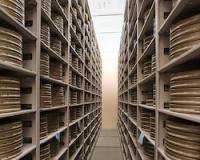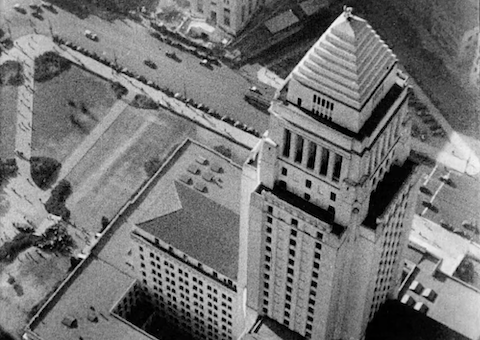
Los Angeles City Hall, 1931
From the 1910s through the 1960s, newsreels were an integral part of motion picture exhibition in the U.S., delivering current events to moviegoers before the advent of television news. Although the newsreels were fashioned, for the most part, to be entertaining, they uniquely document the domestic and international events of their time.
Selected by UCLA Film & Television Archive Senior Newsreel Preservationist Jeffrey Bickel, the following footage is a sampling of Hearst Metrotone News coverage from the 1930s and ’40s that was filmed in Los Angeles and its surrounding communities. The coverage includes political figures as they visit the City of Angels, major sporting events, parades, the founding of institutions and more. Throughout, there is a strong emphasis on Los Angeles’ major industry, Hollywood.
The Hearst Metrotone News Collection at the UCLA Film & Television Archive is one of the largest newsreel collections in the world. In 2023, The Packard Humanities Institute launched a website (newsreels.net) in collaboration with the Archive to share the Hearst collection for research, study and public access. With over 16,000 newsreel stories currently available, the project’s eventual goal is to make the entire Hearst newsreel collection viewable online. The Archive is grateful to The Packard Humanities Institute for its role as the driving force in the project.
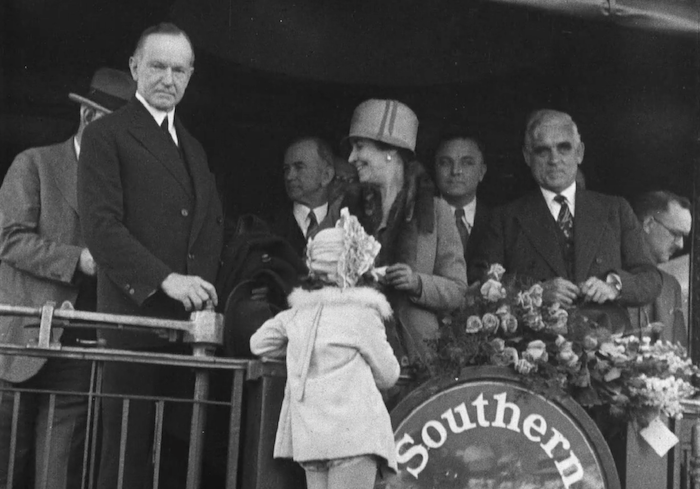
February 1930: “California Greets the Coolidges”
The first story features former president Calvin Coolidge and his wife, Grace, as they visit Los Angeles for the first time, arriving downtown by train. At the Biltmore Hotel, the Coolidges are welcomed by California Governor Clement Calhoun Young and his wife, and the large crowds gathered outside. Although Coolidge was known to be a skilled and effective public speaker, in private he was a man of few words and was commonly referred to as “Silent Cal.” He died suddenly from coronary thrombosis on January 5, 1933, slightly less than three years after this footage was filmed.
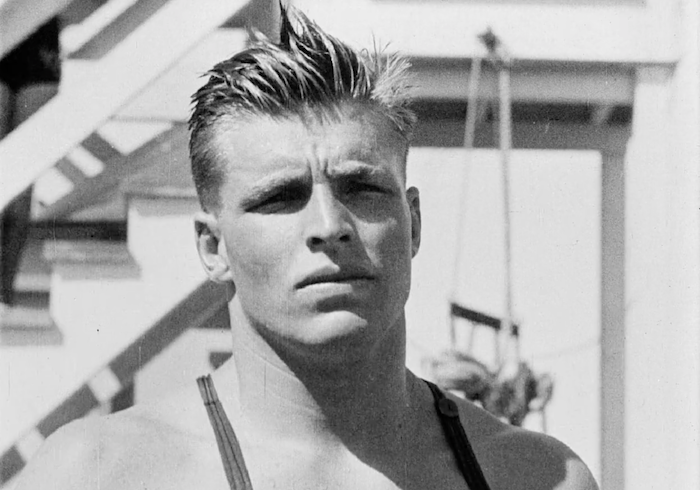
July 1930: “Sensational Race in Big Swim Meet”
This swim meet in Long Beach features competitive swimmer and future Hollywood actor Buster Crabbe. Crabbe won the bronze medal in the 1500 meter freestyle in the 1928 Olympics and would go on to win the gold medal in the 400 meters freestyle in the 1932 Los Angeles Olympic games. He began his Hollywood career with the 1933 serial Tarzan the Fearless and starred in a number of popular films in the 1930s and 1940s, including the title roles in the Flash Gordon and Buck Rogers serials. In the 1950s, he hosted a local New York City children’s TV series, The Buster Crabbe Show, and later starred in the Captain Gallant of the Foreign Legion series.
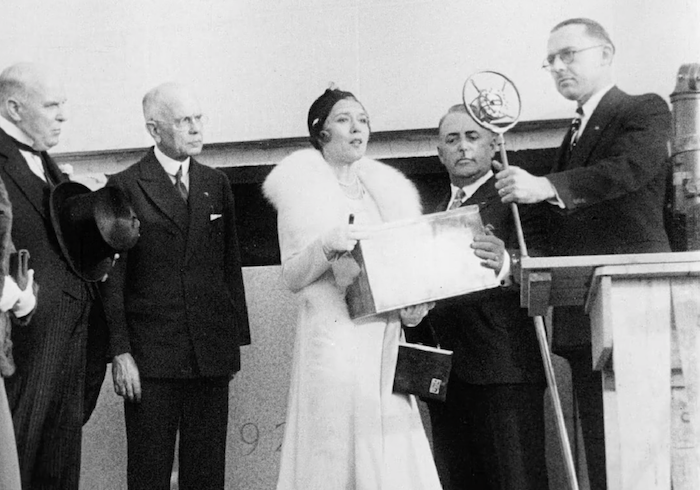
December 1930: “Los Angeles Gets Biggest Hospital”
This story covers the laying of the cornerstone for the L.A. County General Medical Center in the Boyle Heights neighborhood of Los Angeles. In attendance were Republican California Governor James “Sunny Jim” Rolph along with film star Mary Pickford, who laid the cornerstone for this $12 million project.
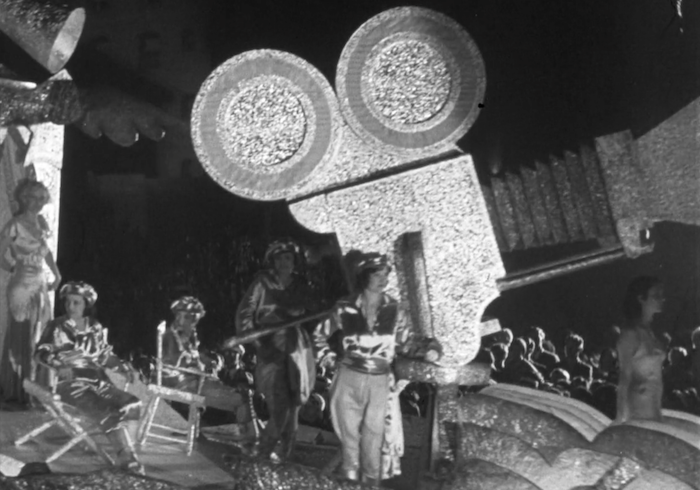
September 1931: “Hollywood Stages a Jewel Pageant”
This glittering motion picture industry parade promotes Hearst’s newsreel distributor, MGM, along with Fox Film Corp.

November 1931: “Papers Delivered by Sky Newsair”
A story on the miracle of modern technology: here, we see the Los Angeles Herald being delivered by blimp to officials at L.A.’s City Hall (City Hall had been completed a few years earlier in 1928). The next month, the newspaper joined the Hearst News empire. Hearst immediately merged the Los Angeles Evening Herald with the Los Angeles Evening Express to form the Los Angeles Evening Herald and Express, which was then the largest circulating evening newspaper west of the Mississippi.
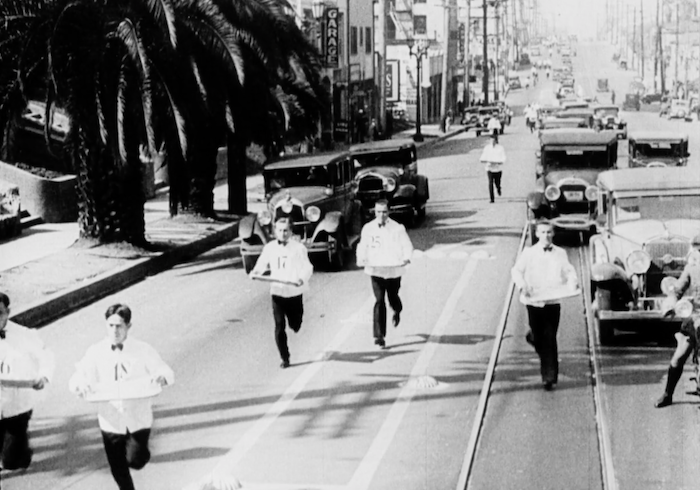
February 1932: “Believe It or Not — Waiters Do Hurry!”
In this race, waiters from local Italian restaurants run toward the finish line carrying trays and drinks. The competition is judged by Tito Schipa, a popular Italian tenor of the time.
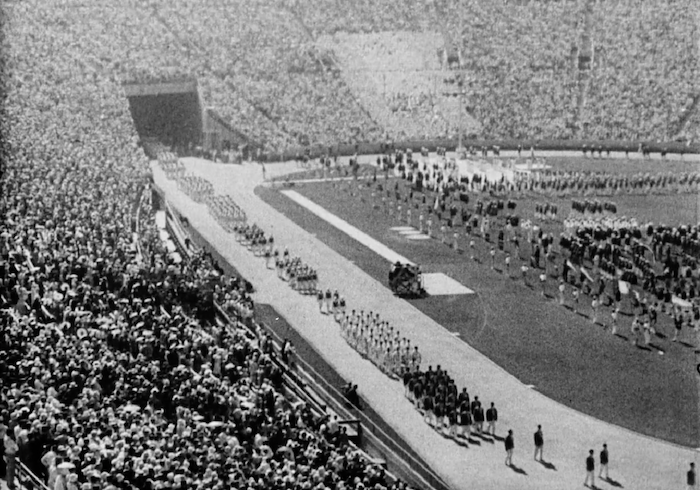
July 1932: “Olympic Games Special!”
In 1932, Los Angeles hosted the Summer Olympics — no other city made a bid to host the event. Held during the Great Depression, many nations and athletes were unable to pay for the trip to Los Angeles. Fewer than half the participants of the 1928 Summer Olympics in Amsterdam returned to compete in 1932. The opening ceremonies were held at the Los Angeles Memorial Coliseum, known at that time as Olympic Stadium. President Herbert Hoover sent Vice President Charles Curtis to officiate the opening ceremonies.
October 1932: “Hollywood Stages Gala Pageant For Gov. Roosevelt”
During a presidential election year, Hollywood hosted New York Governor Franklin D. Roosevelt, who was running for what would be the first of four terms as president. Famed cowboy and entertainer Will Rogers officiated the charity/political campaign event.

March 1933: “Earthquake Disaster in California”
A 6.4 magnitude earthquake struck Long Beach on March 10, 1933, causing 115 deaths and an estimated 40 million dollars’ worth of property damage. Many of these fatalities occurred as people ran out of buildings and were hit by falling debris. The earthquake highlighted the need for earthquake-resistant design for structures in California. More than 230 school buildings were either destroyed, suffered major damage or were judged unsafe to occupy. In the month following the disaster, the California State Legislature passed the Field Act, which mandated that school buildings must be earthquake-resistant. If the earthquake had occurred during school hours, the death toll would have been much higher.
June 1933: “Los Angeles’ New Mayor Greets You”
During L.A. Mayor Frank L. Shaw’s term, the Los Angeles International Airport project was developed by the Works Progress Administration, the Los Angeles Harbor became home base for the Pacific Fleet and the city employees’ retirement system was implemented. Also, Union Station and the downtown Federal Building were constructed. But there were problems. The alleged corruption in City Hall led to a recall movement against Shaw and his close associates. In 1938, he became the first mayor of a major U.S. city to be recalled from office. This led to the election of reform mayor Fletcher Bowron.
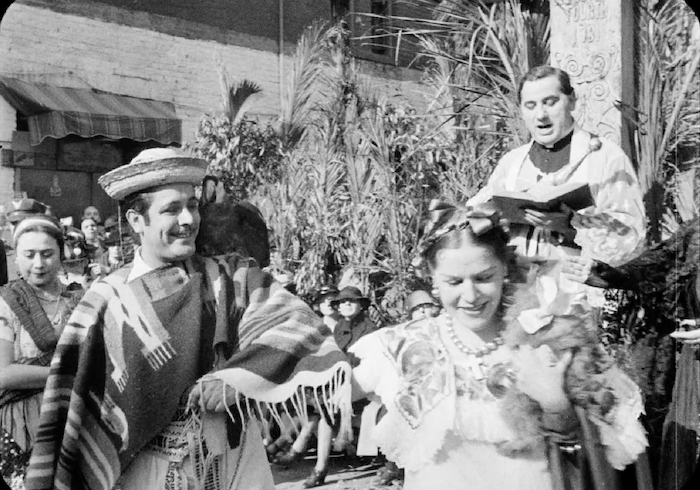
February 1937: “Gives Pets Church Blessing”
This story covers the annual Blessing of the Animals event on Olvera Street in downtown Los Angeles. Olvera Street was opened in 1930 as a major tourist attraction with the backing of Harry Chandler, publisher of the Los Angeles Times. The Blessing of the Animals event has continued to the present day.
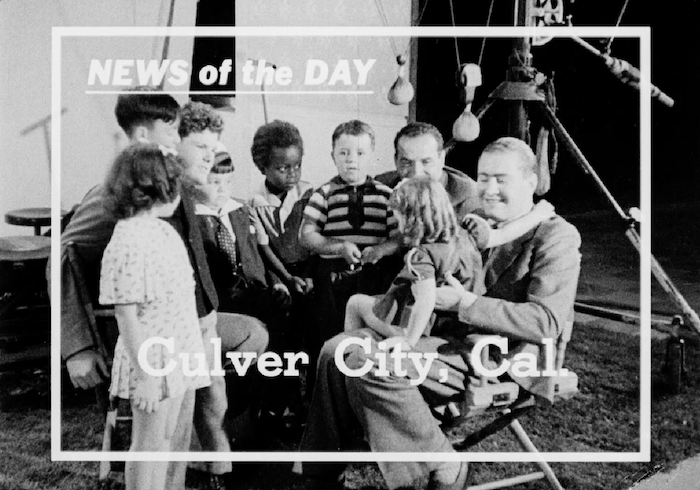
September 1937: “Vittorio Mussolini Meets Our Gang”
Members of Hal Roach’s Our Gang meet with Vittorio Mussolini, son of fascist Italian dictator Benito Mussolini. A little background on this peculiar event: In 1937, filmmaker Roach conceived of a joint business venture, partnering with Vittorio Mussolini to form a production company called “R.A.M.” (Roach and Mussolini). During this period, Roach released his films through MGM. When MGM got wind of this proposed business alliance, they intervened and forced Roach to pay his way out of the venture. This embarrassment contributed to the end of Roach’s relationship with MGM. In May 1938, Roach ended his distribution contract with MGM and sold them the production rights and actor’s contracts for Our Gang. Roach then signed with United Artists.

September 1937: “Clara Bow, Former It Girl, and Husband Rex Bell Open It Cafe in Hollywood, Calif.”
In this unreleased material, retired actor and original “It Girl” Clara Bow and husband Rex Bell welcome guests to their newly opened “It” Cafe. The club was located at 1637 Vine St. in the lobby of the Plaza Hotel near the corner of Hollywood Blvd. and Vine St. Bell hoped a return to public life might take Bow’s mind off a recent miscarriage that had been devastating the film star. Immediately after its September 1937 opening, the “It” Cafe became one of Hollywood’s premiere nightspots patronized not only by many of Bow’s friends from the silent days but heavyweights from new Hollywood as well. But, less than two weeks after the star-studded opening, Bow discovered she was pregnant again. Bow stepped away from her newly opened club and within a year the “It” Cafe changed owners. In this unreleased material, you will notice a couple of retakes and an attempt at comic relief.

August 1942: “Movie Starts Leave for Washington for Command Performance and to Sell Bonds, Los Angeles”
In this unreleased newsreel, a group of Hollywood stars arrive at Union Station to begin their cross-country train trip to sell war bonds. Included in the group are Greer Garson, Ronald Colman, Irene Dunne, Hedy Lamarr, Joan Leslie, Virginia Gilmore, Lynn Bari and Ann Rutherford. In its battle for the hearts and minds of the American people during World War II, the U.S. government viewed its popular performers — singers, dancers and actors — as a crucial weapon. Even before Pearl Harbor, Treasury Department officials began making plans to raise money to finance the war by selling bonds to the public which would be repaid with interest after the war was over. During the war, private citizens and organizations bought $190 billion worth of war bonds at the low interest rate of 1.8 percent. Hollywood stars became central to the war bond drives. The war bond drive we see here was part of a “bond blitz” in September 1942. The blitz enlisted more than 300 actors who sold more than $800 million in bonds.
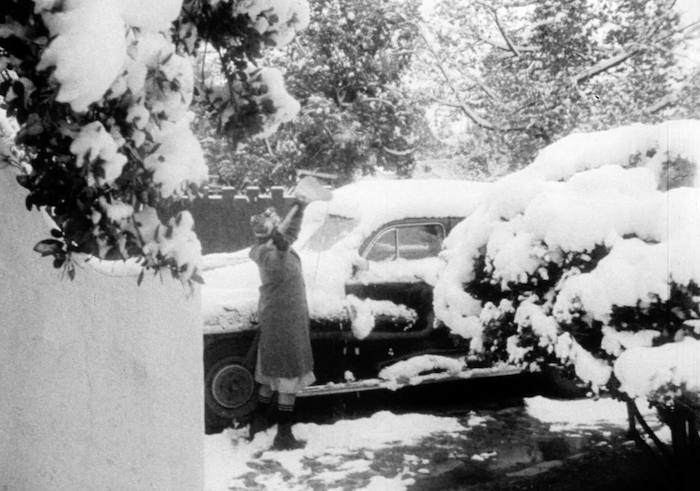
January 1949: “Hollywood Snowbound!”
Here is a very rare occurrence in Los Angeles — snow! The biggest recorded snowstorm to hit the City of the Angels arrived on January 9, 1949. Snowfall lasted nearly three days and varied by location. Only a third of an inch fell on the L.A. civic center where official measurements were made, but nearly a foot fell elsewhere. Snow blanketed the San Fernando Valley, Hollywood and even beach cities from Santa Monica to Laguna. In a city whose traffic arteries seize up at the first drops of rain, snow brought major disruptions. Icy conditions forced the California Highway Patrol to close portions of Pacific Coast Highway, and the canyon roads over the Santa Monica Mountains became impassable. In the San Gabriel Valley, orange growers burned smudge pots in a futile effort to protect their crops from frost.
This blog was adapted from a presentation by Jeffrey Bickel at the 2015 symposium This is the City: Preserving Moving Images of Los Angeles. Blog edited by Jennifer Rhee, Digital Content Manager.
< Back to the Archive Blog






 Mobile Navigation
Mobile Navigation
